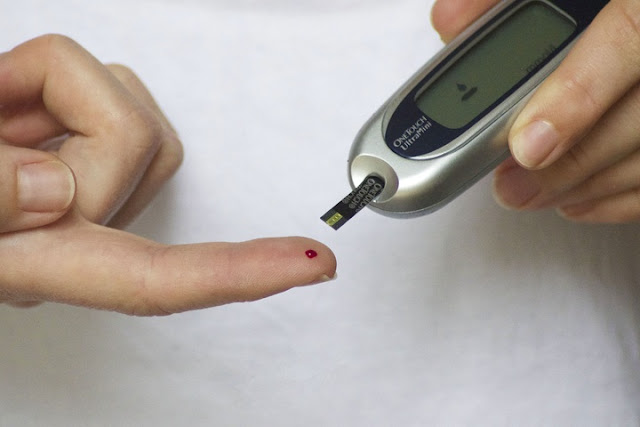Blood glucose (glycemia): normal values and what it indicates when it is altered
The glucose test is performed in order to verify the amount of blood sugar, is the main test performed to diagnose diabetes.
To perform the exam, it is necessary that the person is fasting, so that the result is not altered by the ingestion of any food, being able to give a false positive for diabetes. From the result of the test, the doctor may indicate a readjustment in the diet, the use of hypoglycemic drugs such as Metformin or even the use of insulin if necessary.
Normal values for fasting blood glucose are:
- Normal: less than 99 mg / dl;
- Pre-diabetes: between 100 to 125 mg / dl;
- Diabetes: greater than 126 mg/dl on 2 different days.
The fasting time for the glucose test is 8 hours, and the individual should not eat or drink anything during this period. Before taking the exam, you should not smoke and avoid efforts.
Glucose Tolerance Curve
The glucose tolerance curve, or also called the glucose tolerance test, consists of the ingestion of glucose or dextrose, after the collection of the first fasting sample. In this test, several blood samples are taken: on an empty stomach, 1, 2 and 3 hours after ingestion of the sugary liquid supplied by the laboratory, it being necessary for the person to remain there for several hours.
This test helps the doctor make the diagnosis of diabetes and is usually done during pregnancy, as it is common for glucose levels to increase during that period.
Glucose Tolerance Test Values
The reference values of the glucose intolerance test refer to the glucose value 2 hours or 120 minutes after glucose ingestion and are:
- Normal : less than 140 mg / dl;
- Prediabetes: between 140 and 199 mg/dl;
- Diabetes: equal to or greater than 200 mg/dl.
Thus, if the individual has a fasting blood glucose level greater than 126 mg/dl and a blood glucose level equal to or greater than 200 mg/dl 2 hours after ingesting glucose or dextrose, the doctor will probably tell you that you are diabetic and will be assigned A treatment to follow to maintain blood glucose levels.
Pregnancy Glucose Test
During pregnancy, it is possible for the woman to have alterations in blood glucose levels, so it is important for the obstetrician to request the glucose test, this way it is verified if the woman has gestational diabetes. Both the fasting glucose test and the glucose tolerance test are used, however, the reference values are different.
In the case of fasting blood glucose should not be above 85 mg/dl, in the case of examining the glucose tolerance curve the values are:
- Immediately after the test : Superior 92 mg / dL
- 1 hour after exam : Superior 180 mg / dL
- 2 hours after the test: Superior 155 mg / dL
However, even if the blood glucose is higher than these values, it is not always mean that it is gestational diabetes, especially when there are no risk factors, so the doctor may request another blood test to confirm the diagnosis.
When Should the Glucose Test be Performed?
This test is usually requested by doctors to track the presence of prediabetes and diabetes mellitus, according to the American Diabetes Federation, and should be performed in the presence of risk factors such as:
Symptoms of diabetes such as excessive thirst, excessive hunger, and weight loss;
- Family history of diabetes;
- Sedentary lifestyle;
- Obesity;
- Low (good) HDL cholesterol;
- Hypertension;
- Hyperinsulinism;
- Coronary heart disease such as angina or heart attack;
- History of gestational diabetes or delivery of a child with macrosomia;
- Use of medication that increases blood glucose such as corticosteroids and beta-blockers.
In cases of having impaired fasting blood glucose or decreased glucose tolerance detected in previous tests, it is also recommended to repeat the test annually.
Blood glucose (glycemia): normal values and what it indicates when it is altered
 Reviewed by Admin
on
November 14, 2019
Rating:
Reviewed by Admin
on
November 14, 2019
Rating:
 Reviewed by Admin
on
November 14, 2019
Rating:
Reviewed by Admin
on
November 14, 2019
Rating:









No comments: